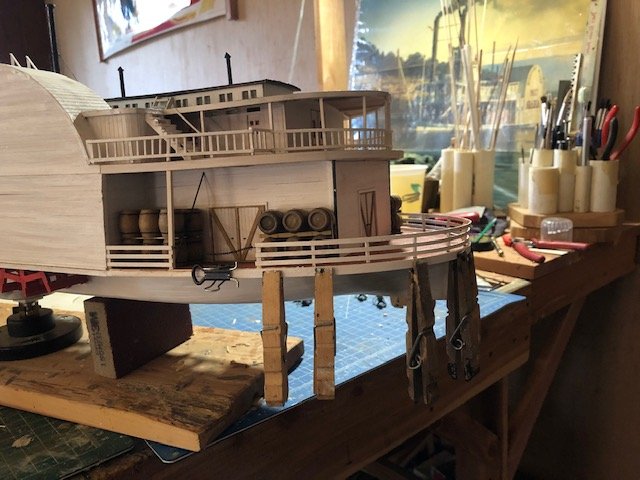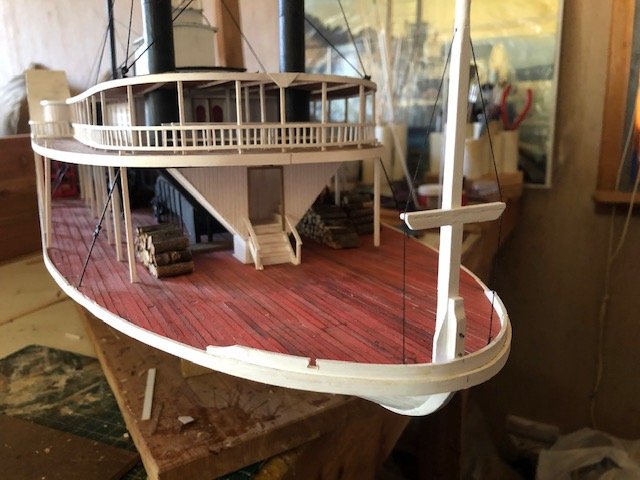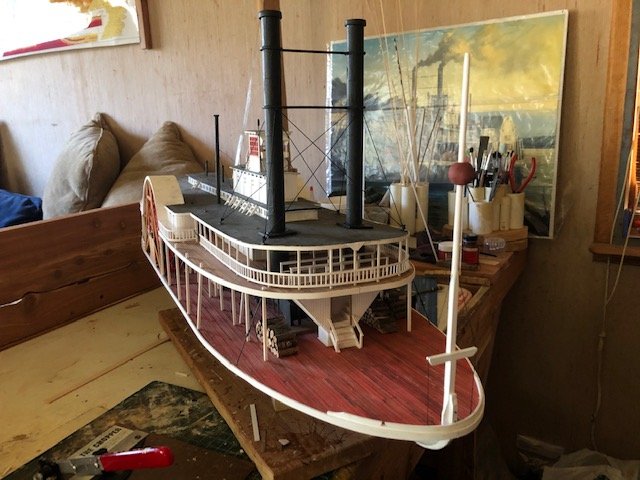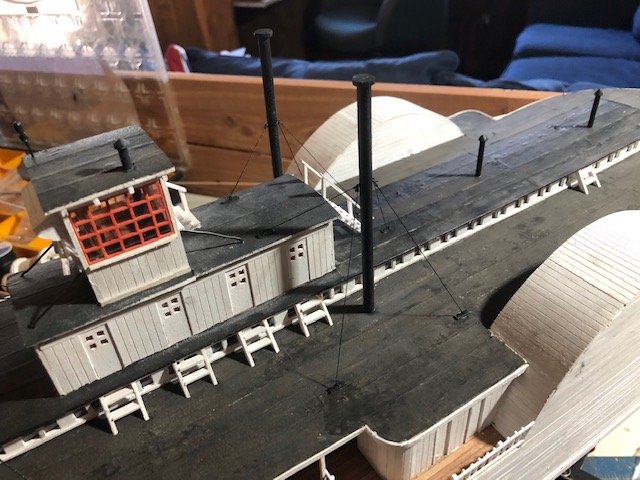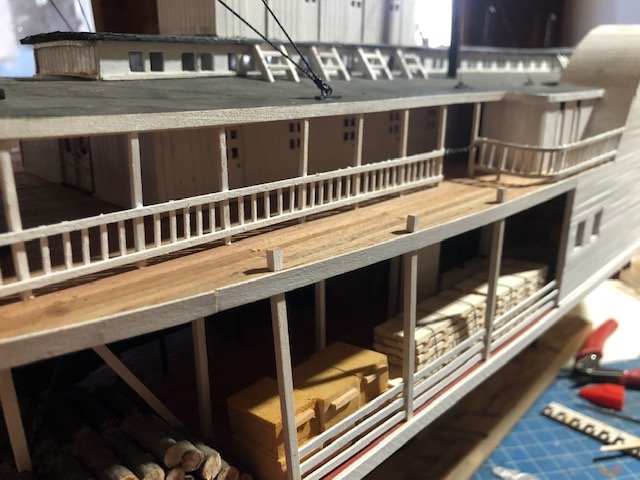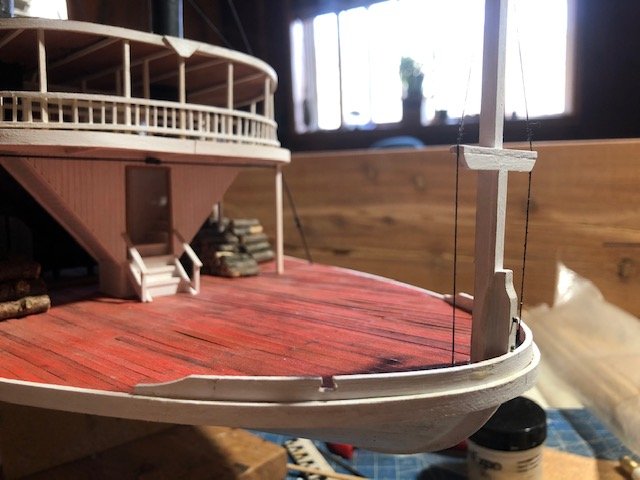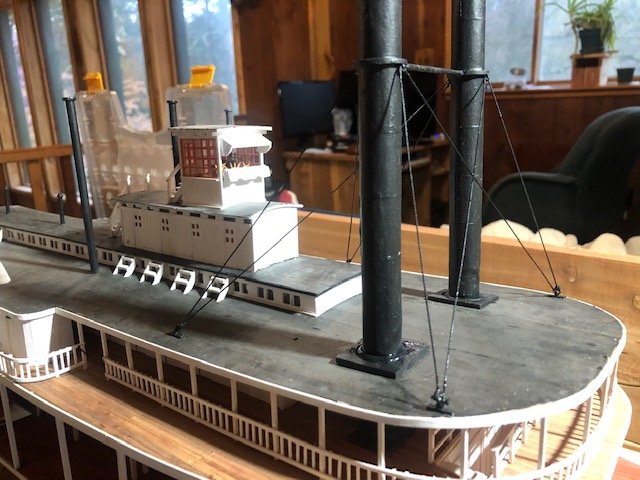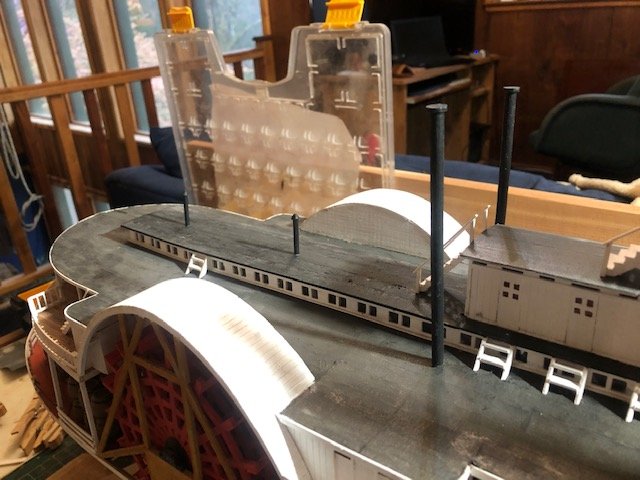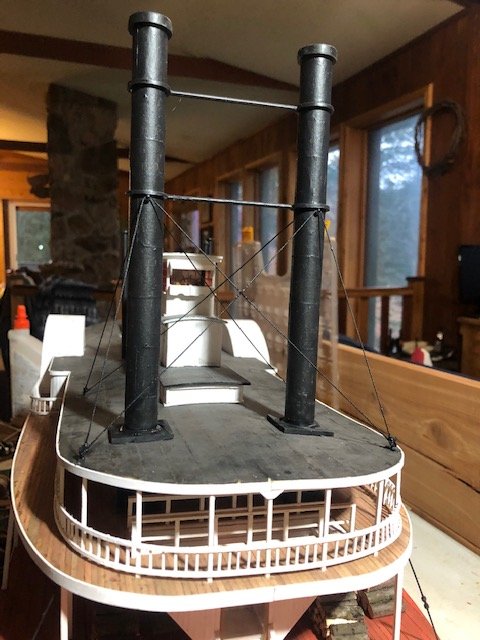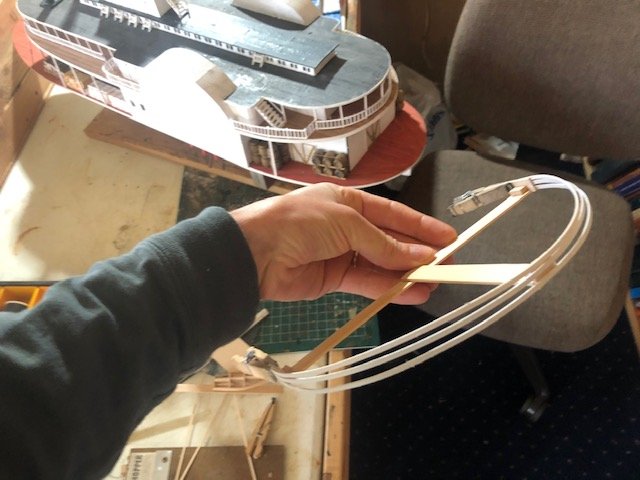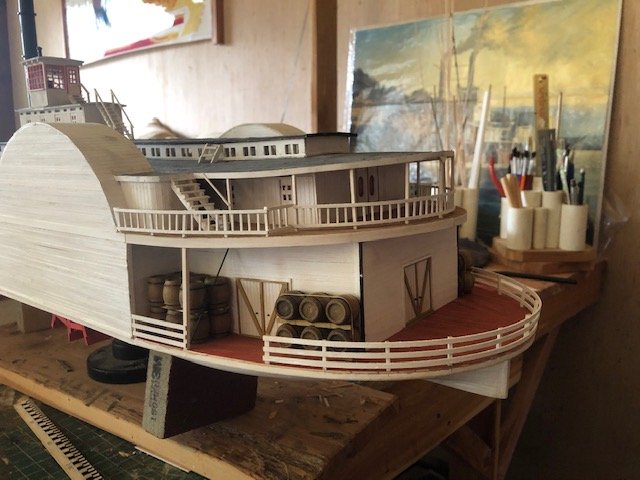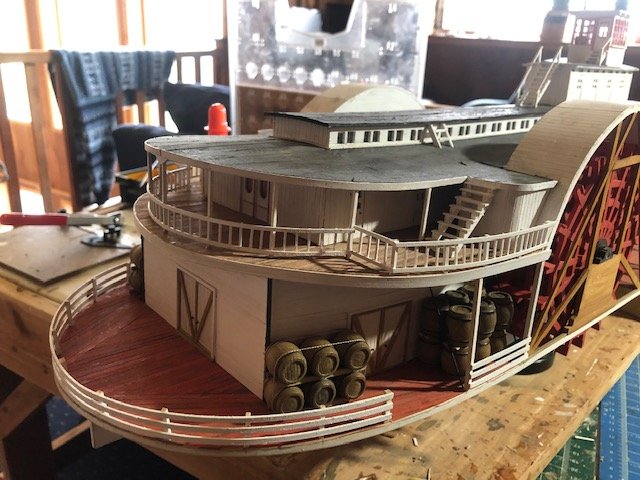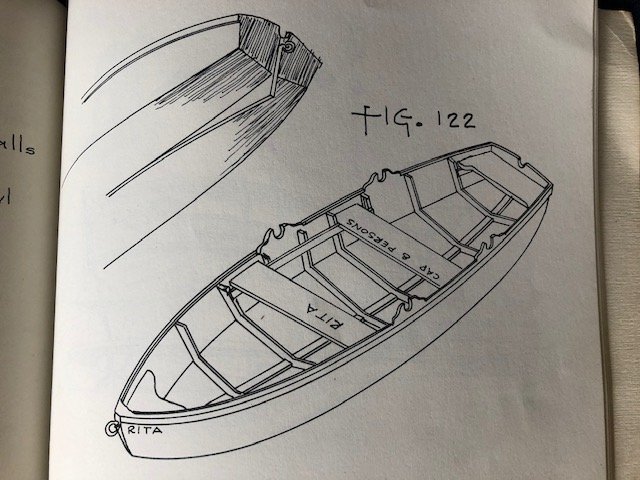-
Posts
3,487 -
Joined
-
Last visited
Content Type
Profiles
Forums
Gallery
Events
Everything posted by Cathead
-
What a fun project, thanks for sharing with us!
- 38 replies
-
- finished
- marine model company
-
(and 1 more)
Tagged with:
-
Wow, water levels in the Ohio got awfully low! I'm going to miss this build so much. Your detail and metal skills are better than mine and you've done such a nice job making a crisp, unique, and attractive model. It's been nice to have this as an inspiration and nudge to keep progressing on my project. I think someday I'd like to get this and kitbash it into a backdated Civil War era Missouri River craft. In any case, congratulations on finishing. I sure hope you do post photos whenever you get a case set up. Thanks for sharing this journey with us.
- 133 replies
-
- chaperon
- model shipways
-
(and 2 more)
Tagged with:
-
It certainly makes sense that low-water conditions would occur in various places, especially by late summer. Given that, it's still the case that the Missouri River was unique from the others in being especially shallow and sediment-dominated with multiple narrow channels braiding together (rather than one main channel defined primarily by bedrock, as in the Ohio basin), and especially prone to low-flow conditions given its arid drainage basin. There's a noticeable shift in annual rainfall across roughly the Mississippi River. For example, at a chestnut-growing conference I attended a few years ago, it became very clear that growers east of that line (Ohio, Michigan, Indiana) saw no need to use irrigation in their orchards and everyone west of that line (Kansas, Missouri) was shocked that they didn't. It's also worth noting that Arabia was built before the true "Missouri River" style of steamboat was developed. By the 1870s, when the Ohio and Mississippi were well on their way to being tamed, the Missouri (especially the upper river) was still in its native form and very hard to navigate. So a style of boat developed with a "spoon" bow that was especially good at sliding over sandbars and pulling up onto (and off of) banks, a low superstructure to deal with high winds, and little to no guards extending beyond the hull to make narrow channel navigation easier. Arabia is basically an Ohio River boat taken into a very different and much rougher river. Look at something like the Far West to see what a proper Missouri River boat looked like. As with any such discussion, we're trying to simplify really complex natural and human systems into a few paragraphs. A whole book could be written about the geologic and geomorphic differences between the very diverse basins in the Mississippi system and how that influenced steamboat navigation and design; most steamboat books I've read only touch on the scientific backdrop to all this.
- 599 replies
-
- sidewheeler
- arabia
-
(and 4 more)
Tagged with:
-
There's a short video on the Arabia museum's site that I hadn't seen before, introducing their search for the Malta (a Missouri River boat that sank way back in 1841). It's interesting in its own right, but it also has a number of still paintings and photographs showing how "gangplanks" were used on the shallow Missouri rather than stages to access the shoreline, with boats just run up against the sand. I also did a bit of reading and found multiple references to sparring being used on the upper Ohio as well. Makes sense, once the water gets shallow enough, that sediment bars would form there too and force a similar need. But I still think it's accurate to say that grasshopper spars were a really diagnostic feature of Missouri River boats.
- 599 replies
-
- sidewheeler
- arabia
-
(and 4 more)
Tagged with:
-

Civil War ironclad by philo426
Cathead replied to Lucius Molchany's topic in - Build logs for subjects built 1851 - 1900
This looks interesting. Can you tell us more about your methods and build activity? -
Brian, great and insightful question(s). It's going to take an essay to answer them, which I want to get right, so I'll get back to you. Really short answer is that the Missouri had a unique combination of shallow water, variable flow, and a sediment-based channel that meant steamboats couldn't avoid or go around sandbars but had to go right over them, unlike the Ohio or Mississippi Rivers for reasons I want to take the time to explain properly but relate to the unique geology and climate of the Great Plains. I believe such spars would have been necessary on other rivers draining the arid West, like the Arkansas or the Red, but am not 100% certain whether they were used. As for the landing stages, because the Missouri was shallow and sediment-based, boats usually just ran themselves up onto the shoreline and unloaded from a plank ramp set down (think a gangplank on sailing ships) because you couldn't get close enough to dry land to use a stage effectively. Stages were used in the more eastern bedrock rivers where you didn't want to run up onto the shore, or on the lower Mississippi where the water was deep enough that you could just pull up to a bank and offload by a stage. It was also more civilized down there, unlike the much rougher Missouri basin, where a plank would do nicely. Grasshopper spars could not be used as loading booms under normal circumstances, their sole purpose was to drag the boat bodily over a channel-spanning sandbar, often many times a day. Another factor in loading booms was the kind of freight being carried. Big bales of cotton or other ag products might need a loading boom of some kind, but those crops were restricted to the middle-lower Mississippi and portions of the lower Missouri. Normal everyday cargo like barrels, crates, lumber, etc. were moved by sheer muscle power (sometimes slave, pre-ACW). Arabia was originally built as an Ohio River boat, so may have had a stage at first, but if so that would have been removed once she was shifted by a new owner to Missouri River service and grasshopper spars would have been installed at that time instead. Chaperon didn't have grasshopper spars (a) because she remained in the Ohio basin and (b) because she came along late enough that channel modifications were already happening (like dredging) that ensured boats could navigate freely. Back in 1856, you were entirely at the mercy of the channel, especially far up the Missouri where the water was often only a few feet deep and snags were everywhere. Boats like Arabia quite literally slithered over channel-spanning bars like an otter, their hulls capable of flexing rather dramatically for those used to sailing vessels (one reason for all those hog chains was to allow for a flexible hull; a maritime hull would break its back in no time on the Missouri). This is all simplified and was really more complex. For example, the lower Missouri takes on many characteristics of the middle-lower Mississippi (I don't doubt that boats with stages worked the lower Missouri). Finally, Arabia is particularly unusual because few sidewheelers went up the Missouri beyond roughly modern-day Omaha, because they struggled with the shallow, snag-filled conditions of the upper Missouri. Sternwheelers were far better suited to these conditions. It's amazing to me that Arabia went all the way to Montana, even partway up the Yellowstone, as a sidewheeler. Okay, that wasn't short at all, but there's so much more to say. Hope Kurt, Roger, or anyone else will correct me if I said something mistaken in my enthusiasm. Will try to write a more cogent explanation later. As for fully rigged ships, the closest I've come was my revenue cutter (see link in signature), which was quite interesting. Maybe someday, but I have limited display space and sailing vessels just have so little relevance in the Ozarks. Believe me, I'd love to. I grew up near Lake Ontario and sailed quite a bit as a youngster, but ended up here as an adult so have adopted the maritime tradition of my new home. I do have a someday dream of scratchbuilding the brig Ontario, which sank in Lake Ontario and has had a very nice book (with full drawings) written about it.
- 599 replies
-
- sidewheeler
- arabia
-
(and 4 more)
Tagged with:
-

2020 NRG Conference
Cathead replied to kurtvd19's topic in NAUTICAL RESEARCH GUILD - News & Information
Huh, I don't think I got that email. This was the first I knew of, though I was expecting something of the kind. We were strongly considering going, so hopefully it'll work for us in another year. Definitely the right decision under the circumstances. Thanks for getting the word out, Kurt. -
Forgot to say, I totally agree. Granted, I've never rigged a big three-master, but I really like the visual appeal and logical puzzle of rigging. I certainly think the extras I added to Arabia add visual interest to the otherwise somewhat spare topside, and grasshopper spars are great for adding complicated eye candy!
- 599 replies
-
- sidewheeler
- arabia
-
(and 4 more)
Tagged with:
-
As is often the case, what I thought I'd do next wasn't what I ended up doing next. Instead of the capstan and grasshopper spars, I focused on other details. For example, I added strips of wood sealing in the edge of the main deck. For the curves around the bow and stern, these were soaked, bent, and dried, then painted while held in a jig so the paint's moisture wouldn't undo the bend. Worked pretty well. It's hard to tell the difference in photos, but they really clean up the deck's edges in person. I added other bow details, such as the jackstaff and the curved bit of wood extending above the deck around the bow (no idea what this is called). The latter was tricky and took several tries. I consulted various photos and drawings of different jackstaffs, then went within a design I liked. This would have been attached to an extention of the stem (coming out through the deck). Some were strapped on with iron; I chose to "bolt" mine on instead. The jackstaff was not a flagpole but a navigation aid. The pilot could use this to as a reference point when sighting against faraway landmarks like ridges, bluffs, trees, and islands. The relative motion of the boat and jackstaff helped him judge the boat's actual movement in difficult navigational conditions. The red ball, called a "nighthawk", was placed roughly at the pilot's eye level as an additional reference point. Based on photos, some boats had rigging bracing the jackstaff and some did not. I added a bit, both for visual interest and for reasons explained after the next photo. I also added support lines to the engine steam vents. As far as I can tell, like the jackstaff rigging, some boats did this and some didn't. I decided that Arabia, which navigated far up the Missouri River into the windy Great Plains (deep into Montana), would want the extra bracing in both cases. For similar reasons, I added "iron" bars bracing the vulnerable pilothouse. Finally, I rectified an early mistake. The lower posts supporting the boiler deck should extend through the deck just a little. I didn't do that early on, so cut a series of short "post" stubs and glued them on top. Looks pretty convincing. Pretty soon I'm going to need to build the final stand, as I'll want to attach her permanently to that before doing the most delicate work (like the grasshopper spars). I have a lot of well-cured cherry lumber in my barn that I cut here years ago, and think I'll try to put something together with that. I ordered a few last details from Model Expo (like a bell and two boat kits), so whenever those arrive they'll help add some more details. That order also included my next project, which I'm already looking forward to. Having it in hand will encourage me to finish this model. Thanks for reading. The end is now in sight, though it's weeks away yet.
- 599 replies
-
- sidewheeler
- arabia
-
(and 4 more)
Tagged with:
-
Just a thought, but as long as you're considering nail holes, keep in mind that planks were nailed to every deck beam, not just the ones at the end. In practice, you'd have parallel sets of nail holes every scale foot or two along each plank. Of course, that's a lot of work and you could decide it would make the deck look too busy, but I thought I'd suggest it. Your approach highlights the idea of nailed planks while leaving a clean-looking deck that emphasizes the planking. Especially given that this kit isn't particularly prototypical, the best choice is whater you think looks best!
-
One trick I've found very helpful personally, choose a "good" side for the model (the primary display side) and always do uncertain tasks on the other side first. For example, if you plan to display the port side, plank the starboard side first so any initial mistakes are less visible at the end. Same for anything else that has a "side".
- 950 replies
-
- syren
- model shipways
-
(and 1 more)
Tagged with:
-
Prices can reflect a lot of things. For example, how old is the kit? If it's been around 20 years and the manufacturer has long since paid off the development costs, it might be sold cheaper as they can just churn out replacements. If it's newer, it may be more expensive because it takes a lot just to develop a kit, but it also may be a better kit as manufacturing methods and other aspects of improved over time. Quality of materials is a big one, and may relate to kit age. Newer kits are likely to have better-quality materials, which you might have to pay for but are well worth it. Then there's the question of who's doing the selling; different outlets have different business models; the cheapest price might not be fair or sustainable depending on the background context.
-
Nice touch adding working hinges!
- 86 replies
-
- king of the mississippi
- artesania latina
-
(and 2 more)
Tagged with:
-
As you asked, I have built one Corel kit and swore never to again as I found the instructions, materials, and kit design rather poor and frustrating. However, there is no doubt that even a bad kit can be completeted successfully and attractively with enough perseverence, patience, and research into the necessary skills to overcome its flaws. So keep at it if you really like this particular prototype. As others have said, starting a proper build log is likely the best way to get ongoing help with your build.
-
Cool, I love Scandanavian ships of this period and might someday want to build this. Looking forward to reading about your experience.
-
What a fantastic detail! Really nicely done and gives the build a very distinct personal touch. I'll miss this build when it's gone.
- 133 replies
-
- chaperon
- model shipways
-
(and 2 more)
Tagged with:
-
Thanks, John. All kidding aside, we actually know a lot about her cargo as it was almost all salvaged and is on display (or still being catalogued and cleaned) at the museum in Kansas City. She was carrying a lot of whiskey (hence all my barrels) and tons of crates of frontier supplies (nails, boots, tools, farm implements, etc.). She was heading upriver when she sank; any agricultural products would have been carried on a downriver trip. Some cotton was grown in central Missouri, along with other plantation crops like tobacco and hemp; this region was (and still is) referred to as "Little Dixie" given that it had the highest antebellum concentration of slaves and plantations anywhere in the state and was decidedly more Southern than elsewhere; you can still find huge plantation-style houses along the Missouri River in this area.
- 599 replies
-
- sidewheeler
- arabia
-
(and 4 more)
Tagged with:
-
Mark, that's very generous, let me think about it. Another option is just to make a rough solid hull, plank over it, and cover the boat with a tarp. I've read in multiple locations that these were almost never covered, which is why I've avoided that option so far.
- 599 replies
-
- sidewheeler
- arabia
-
(and 4 more)
Tagged with:
-
I have tried three different ways of scratchbuilding scale boats and none have worked. Feeling rather frustrated. I just can't get them to form right using pieces small enough to look in-scale; my skills just can't seem to handle detail work at that level and I don't have a feel for the natural shape of a hull. Even a simple john boat is escaping me. I did make some other progress by installing some more details along the superstructure and setting up the rigging for the main chimneys (below). The two small chimneys down the centerline would lead to wood stoves. The two taller stacks are the steam vents from the engines. Two shots of the chimney rigging (below). I used a basic braided line left over from some kit. To make the attachments on the chimneys, I glued some old parrel beads from my revenue schooner. To make the attachments on the deck, I made thin wooden "clamps" (these would have mirrored similar planks below the deck, clamping together over the beams) and drilled small eyebolts into them (also left over from my revenue schooner). The line was white, so once it was tied and glued in place, I painted it black, hoping that would help stabilize it. The knots came out a little coarser than I intended, but they match the overall quality of the build (don't look too closely). I know these are supposed to have turnbuckles but I couldn't come up with a way to simulate these at scale that looked better than leaving them out. I think the next step will be to start placing various details on the bow, such as the steam capstan and the "grasshopper" spars used to haul the boat over sandbars. Then she'll be getting pretty close to finished, other than those danged boats.
- 599 replies
-
- sidewheeler
- arabia
-
(and 4 more)
Tagged with:
-
Mark, I meant the scale of the craft overall. I can know that I need a boat that's X long in inches, but depending on how the parts are scaled it may or may not look right. For example, a boat with parts scaled for 1:48 just won't look right in 1:64 even if it's the right "length". And I can't find any info on scaling from MS; need to check out MK. The scanner idea is interesting but then I have a boat kit I don't otherwise need. For the moment I'm going to keep stubbornly experimenting for myself but I'll keep your idea as a backup.
- 599 replies
-
- sidewheeler
- arabia
-
(and 4 more)
Tagged with:
-
Those kits look really handy, but I'm afraid they'd be out of scale at my 1:64 if they were right for your 1:48; MS doesn't give a scale. I've started dabbling with this but have yet to figure out an approach that works for me. It's harder than I thought to lay out and build a very small boat at this scale.
- 599 replies
-
- sidewheeler
- arabia
-
(and 4 more)
Tagged with:
-
I managed two more steps this week. First was gluing in the chimneys, which was scary as now there's a much larger delicate feature to bump or snag. No photos of this because it doesn't look any different from past test-fittings. Second, I worked on the main deck stern railings. This was difficult because I needed the railings to hold the full curve around the stern without any other support as the boiler deck doesn't extend out over this. Here's an example of what I'm basing this on. So what I did was build a basic jig that would hold the railings in the right curve while I (a) soaked and bent them and (b) painted them, as I've learned the hard way that painting makes thin strips like this lose a lot of their pre-bent curve. This worked really well. After the initial soaking and drying, I painted them in place. When that was dry, I took them off and painted the small bits covered by the clamps and jig; this wasn't enough to lose the curve. Then I mounted three thick posts on the main deck using small pins, one at each end of the railing and one at the very stern. When these were solid, I mounted the railings, then went back in and added smaller spacing posts. Here's the results: I think it came out nicely. Now I'm terrified of bumping the stern. Oh well. I've also started thinking about the two yawls I'll need. These were a pretty distinct design used on the Western Rivers; there was some good discussion of these over in Brian's Chaperon build, such as here and here. Basically I need to build two 16-18' boats with a flat stern and a hard chine (no rounding between the bottom and the sides). In addition to the photos shared in the second link above, I found two relevant drawings of what these craft might have looked like, but these differ in one important respect and I'd like an opinion from the resident experts (look, I'm asking ahead of time for once!). First, drawings of an Ohio River yawl from Howard Chappelle (sourced from Google Books). This has a fully flat bottom from side to side. Second, a sketch of a riverboat yawl from Alan Bates (photo from a book in my possession). This has an angled bottom from side to side: I'm not sure about posting these images as it technically may violate copyright, but I'm also not sure how else to explain what I'm trying to work out about these two designs. Happy to take them down in a moderator thinks it's a problem. Meanwhile, I'd like to better understand the difference between the two and which version might be better for me (and/or easier to build). Any advice/input?
- 599 replies
-
- sidewheeler
- arabia
-
(and 4 more)
Tagged with:
-
That's an interesting thought. I'm feeling that a bit in my current 2.5 year project and could see the value in doing somethinge else, but I also so want to be done! Regardless, well done. Master Korabel seems to do really nice work.
- 77 replies
-
- morel
- master korabel
-
(and 1 more)
Tagged with:
About us
Modelshipworld - Advancing Ship Modeling through Research
SSL Secured
Your security is important for us so this Website is SSL-Secured
NRG Mailing Address
Nautical Research Guild
237 South Lincoln Street
Westmont IL, 60559-1917
Model Ship World ® and the MSW logo are Registered Trademarks, and belong to the Nautical Research Guild (United States Patent and Trademark Office: No. 6,929,264 & No. 6,929,274, registered Dec. 20, 2022)
Helpful Links
About the NRG
If you enjoy building ship models that are historically accurate as well as beautiful, then The Nautical Research Guild (NRG) is just right for you.
The Guild is a non-profit educational organization whose mission is to “Advance Ship Modeling Through Research”. We provide support to our members in their efforts to raise the quality of their model ships.
The Nautical Research Guild has published our world-renowned quarterly magazine, The Nautical Research Journal, since 1955. The pages of the Journal are full of articles by accomplished ship modelers who show you how they create those exquisite details on their models, and by maritime historians who show you the correct details to build. The Journal is available in both print and digital editions. Go to the NRG web site (www.thenrg.org) to download a complimentary digital copy of the Journal. The NRG also publishes plan sets, books and compilations of back issues of the Journal and the former Ships in Scale and Model Ship Builder magazines.



